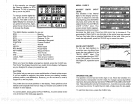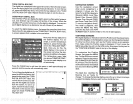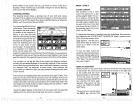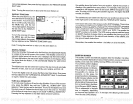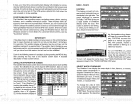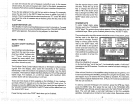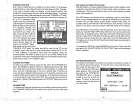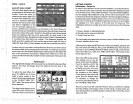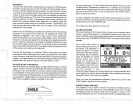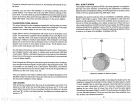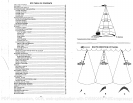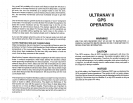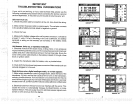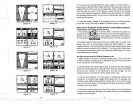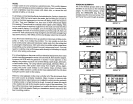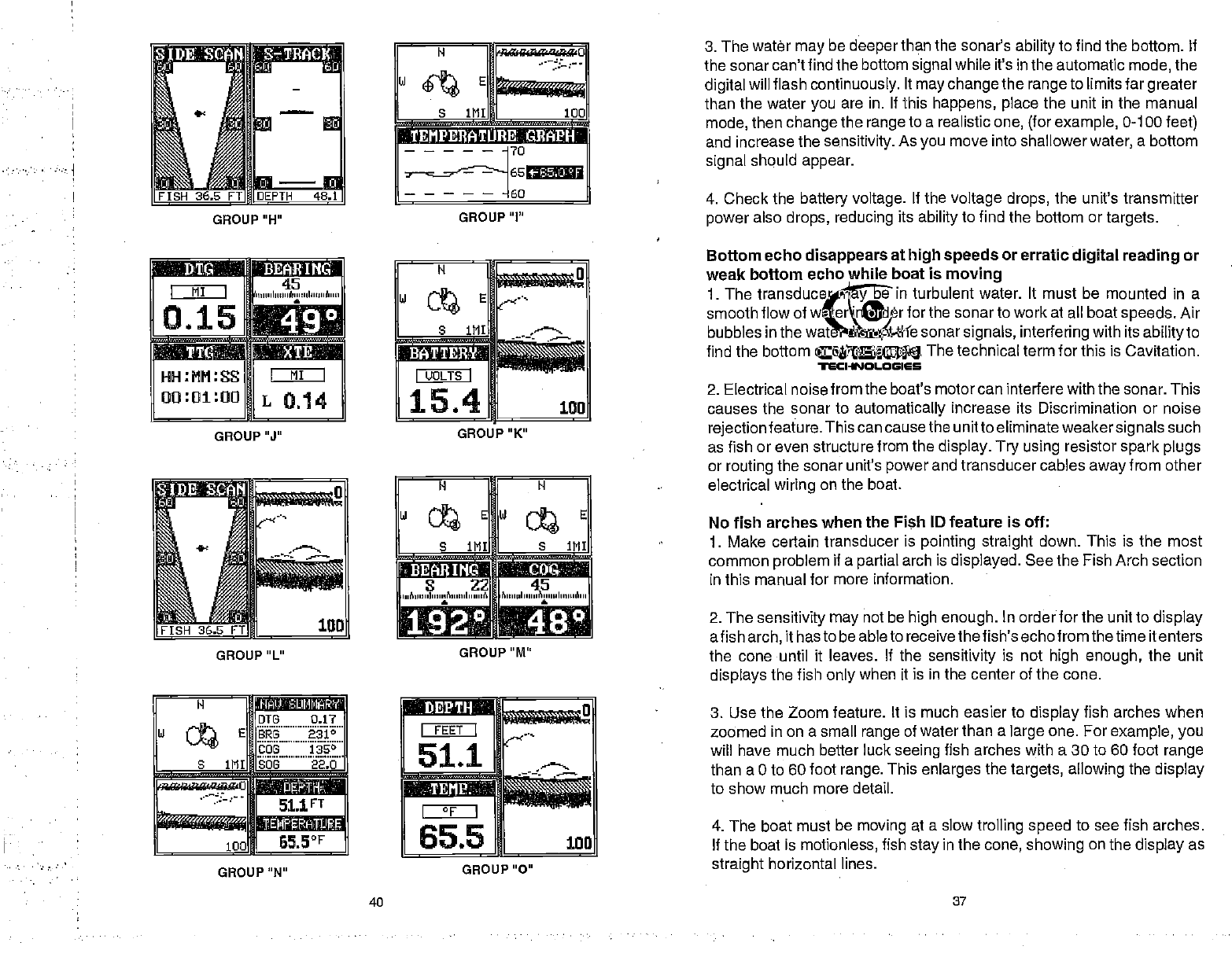
3. The water
may
be
deeper
than the sonar's
ability
to find the bottom. If
the sonar can't find the bottom
signal
while it's in the automatic
mode,
the
digital
will flash
continuously.
It
may change
the
range
to limits far
greater
than the
water
you
are in. If this
happens, place
the unit in the manual
mode,
then
change
the
range
to a realistic
one,
(for example,
0-100
feet)
and increase
the
sensitivity.
As
you
move into shallower
water,
a bottom
signal
should
appear.
4. Check the
battery voltage.
If the
voltage drops,
the unit's
transmitter
power
also
drops,
reducing
its
ability
to find the bottom or
targets.
Bottom echo
disappears
at
high speeds
or
erratic
digital
reading
or
weak bottom echo
while boat is
moving
1. The transducer
may
be in turbulent water. It must be mounted in a
smooth
flow of water in order for the sonar to work at all boat
speeds.
Air
bubbles
in the water
disrupt
the
sonarsignals, interfering
with its
ability
to
find the bottom
or other
targets.
The technical term for this is
Cavitation.
2. Electrical noise from
the boat's motor can interfere with
the sonar. This
causes the sonar to
automatically
increase its Discrimination or noise
rejectionfeature.
This can causethe unitto
eliminateweakersignals
such
as fish or even structure from the
display. Try using
resistor
spark plugs
or
routing
the sonar unit's
power
and transducer cables
away
from other
electrical
wiring
on the boat.
No fish arches
when the
Fish
ID feature is off:
1. Make certain transducer
is
pointing straight
down. This is the most
common
problem
if a
partial
arch is
displayed.
See the Fish Arch section
in this manual for
more information.
2. The
sensitivity may
not be
high enough.
In order for the unit to
display
afish
arch,
it hasto be able to receivethefish's echofrom thetime itenters
the cone until it leaves. If the
sensitivity
is not
high enough,
the unit
displays
the fish
only
when it is in the center of the cone.
3. Use
the Zoom feature. It is much easier to
display
fish arches when
zoomed in on a small
range
of water than a
large
one. For
example, you
will have much better luck
seeing
fish arches with a 30 to 60 foot
range
than a 0 to 60 foot
range.
This
enlarges
the
targets, allowing
the
display
to show much more detail.
4. The boat must be
moving
at a slow
trolling speed
to see fish arches.
If the boat is
motionless,
fish
stay
in the
cone,
showing
on the
display
as
straight
horizontal lines.
Th9
5
1MI
100
-
-
D$ :n'vui :i DtB1fl ;U
O
tfram
'—r
FISH 36.
FTI
DEPTH 46.1
GROUP "H"
I
MI
I
0.15
*te
HH:MM:SS
OO01O
•:)DrflI(eI
45
I,i,piiAni,i Iou,, Au,,
Ei
J
MI
I
L
0.14
GROUP "I"
GROUP "J"
H
Ui
E
rr'
S 1MI
s:s'a
I
JOLTS I
r
15.4
100
GROUP "K"
H
H
S1MI 9
•:R4'I:IU
11*1
S
22
,,,6,,,,i,lu,i
.i,,,,,,, I,,.,, 6
45
A ,,,,,,I sun6'..,,, Ii,,,,, 6,,,
RtM
GROUP "M"
• oi
I FEET I
51.1
;i
.—
---a
I
°F
I
'
65.5
100
GROUP "L"
GROUP "N"
GROUP "0"
40
37
PDF compression, OCR, web-optimization with CVISION's PdfCompressor



